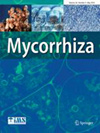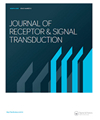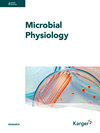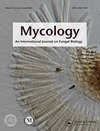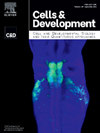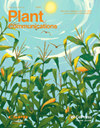MycorrhizaSCIE
國際簡稱:MYCORRHIZA 參考譯名:菌根
- 基本信息:
- ISSN:0940-6360
- E-ISSN:1432-1890
- 是否OA:未開放
- 是否預警:否
- TOP期刊:是
- 出版信息:
- 出版地區(qū):UNITED STATES
- 出版商:Springer Berlin Heidelberg
- 出版語言:English
- 出版周期:Bimonthly
- 出版年份:1991
- 研究方向:生物-真菌學
- 評價信息:
- 影響因子:3.3
- H-index:80
- CiteScore指數(shù):8.2
- SJR指數(shù):0.924
- SNIP指數(shù):1.055
- 發(fā)文數(shù)據(jù):
- Gold OA文章占比:28.33%
- 研究類文章占比:94.44%
- 年發(fā)文量:36
- 自引率:0.0256...
- 開源占比:0.2222
- 出版撤稿占比:0
- 出版國人文章占比:0.09
- OA被引用占比:0.1012...
英文簡介Mycorrhiza期刊介紹
Mycorrhiza is an international journal devoted to research into mycorrhizas - the widest symbioses in nature, involving plants and a range of soil fungi world-wide. The scope of Mycorrhiza covers all aspects of research into mycorrhizas, including molecular biology of the plants and fungi, fungal systematics, development and structure of mycorrhizas, and effects on plant physiology, productivity, reproduction and disease resistance. The scope also includes interactions between mycorrhizal fungi and other soil organisms and effects of mycorrhizas on plant biodiversity and ecosystem structure.
Mycorrhiza contains original papers, short notes and review articles, along with commentaries and news items. It forms a platform for new concepts and discussions, and is a basis for a truly international forum of mycorrhizologists from all over the world.
期刊簡介Mycorrhiza期刊介紹
《Mycorrhiza》自1991出版以來,是一本生物學優(yōu)秀雜志。致力于發(fā)表原創(chuàng)科學研究結(jié)果,并為生物學各個領(lǐng)域的原創(chuàng)研究提供一個展示平臺,以促進生物學領(lǐng)域的的進步。該刊鼓勵先進的、清晰的闡述,從廣泛的視角提供當前感興趣的研究主題的新見解,或?qū)彶槎嗄陙砟硞€重要領(lǐng)域的所有重要發(fā)展。該期刊特色在于及時報道生物學領(lǐng)域的最新進展和新發(fā)現(xiàn)新突破等。該刊近一年未被列入預警期刊名單,目前已被權(quán)威數(shù)據(jù)庫SCIE收錄,得到了廣泛的認可。
該期刊投稿重要關(guān)注點:
Cite Score數(shù)據(jù)(2024年最新版)Mycorrhiza Cite Score數(shù)據(jù)
- CiteScore:8.2
- SJR:0.924
- SNIP:1.055
| 學科類別 | 分區(qū) | 排名 | 百分位 |
| 大類:Agricultural and Biological Sciences 小類:Ecology, Evolution, Behavior and Systematics | Q1 | 64 / 721 |
91% |
| 大類:Agricultural and Biological Sciences 小類:Plant Science | Q1 | 49 / 516 |
90% |
| 大類:Agricultural and Biological Sciences 小類:Genetics | Q1 | 70 / 347 |
79% |
| 大類:Agricultural and Biological Sciences 小類:Molecular Biology | Q2 | 119 / 410 |
71% |
CiteScore 是由Elsevier(愛思唯爾)推出的另一種評價期刊影響力的文獻計量指標。反映出一家期刊近期發(fā)表論文的年篇均引用次數(shù)。CiteScore以Scopus數(shù)據(jù)庫中收集的引文為基礎(chǔ),針對的是前四年發(fā)表的論文的引文。CiteScore的意義在于,它可以為學術(shù)界提供一種新的、更全面、更客觀地評價期刊影響力的方法,而不僅僅是通過影響因子(IF)這一單一指標來評價。
中科院SCI分區(qū)Mycorrhiza 中科院分區(qū)
| 大類學科 | 分區(qū) | 小類學科 | 分區(qū) |
| 生物學 | 2區(qū) | PLANT SCIENCES 植物科學 MYCOLOGY 真菌學 | 2區(qū) 3區(qū) |
中科院分區(qū)表 是以客觀數(shù)據(jù)為基礎(chǔ),運用科學計量學方法對國際、國內(nèi)學術(shù)期刊依據(jù)影響力進行等級劃分的期刊評價標準。它為我國科研、教育機構(gòu)的管理人員、科研工作者提供了一份評價國際學術(shù)期刊影響力的參考數(shù)據(jù),得到了全國各地高校、科研機構(gòu)的廣泛認可。
中科院分區(qū)表 將所有期刊按照一定指標劃分為1區(qū)、2區(qū)、3區(qū)、4區(qū)四個層次,類似于“優(yōu)、良、及格”等。最開始,這個分區(qū)只是為了方便圖書管理及圖書情報領(lǐng)域的研究和期刊評估。之后中科院分區(qū)逐步發(fā)展成為了一種評價學術(shù)期刊質(zhì)量的重要工具。
JCR分區(qū)Mycorrhiza JCR分區(qū)
| 按JIF指標學科分區(qū) | 收錄子集 | 分區(qū) | 排名 | 百分位 |
| 學科:MYCOLOGY | SCIE | Q2 | 11 / 33 |
68.2% |
| 學科:PLANT SCIENCES | SCIE | Q1 | 64 / 265 |
76% |
| 按JCI指標學科分區(qū) | 收錄子集 | 分區(qū) | 排名 | 百分位 |
| 學科:MYCOLOGY | SCIE | Q1 | 8 / 33 |
77.27% |
| 學科:PLANT SCIENCES | SCIE | Q1 | 52 / 265 |
80.57% |
JCR分區(qū)的優(yōu)勢在于它可以幫助讀者對學術(shù)文獻質(zhì)量進行評估。不同學科的文章引用量可能存在較大的差異,此時單獨依靠影響因子(IF)評價期刊的質(zhì)量可能是存在一定問題的。因此,JCR將期刊按照學科門類和影響因子分為不同的分區(qū),這樣讀者可以根據(jù)自己的研究領(lǐng)域和需求選擇合適的期刊。
發(fā)文數(shù)據(jù)
- 國家/地區(qū)數(shù)量
- USA33
- CHINA MAINLAND32
- France31
- Japan20
- GERMANY (FED REP GER)18
- Italy17
- Brazil13
- Canada13
- Mexico13
- Australia12
本刊中國學者近年發(fā)表論文
-
1、Maize varieties can strengthen positive plant-soil feedback through beneficial arbuscular mycorrhizal fungal mutualists
Author: Xin-Xin Wang, Ellis Hoffland, Liesje Mommer, Gu Feng, Thomas W. Kuyper
Journal: MYCORRHIZA, 2019, Vol., , DOI:10.1007/s00572-019-00885-3
-
2、Interactions between arbuscular mycorrhizal fungi and non-host <Emphasis Type="Italic">Carex capillacea</Emphasis>
Author: Haibo Zhang, Zefeng Qin, Yanan Chu, Xiaolin Li, Peter Christie, Junling Zhang, Jingping Gai
Journal: MYCORRHIZA, 2019, Vol.29, 149-157, DOI:10.1007/s00572-019-00882-6
-
3、Common mycorrhizal networks influence the distribution of mineral nutrients between an invasive plant, <Emphasis Type="Italic">Solidago canadensis</Emphasis>, and a native plant, <Emphasis Type="Italic">Kummerowa striata</Emphasis>
Author: Awagul Awaydul, Wanying Zhu, Yongge Yuan, Jing Xiao, Hao Hu, Xin Chen, Roger T. Koide, Lei Cheng
Journal: MYCORRHIZA, 2018, Vol.29, 29-38, DOI:10.1007/s00572-018-0873-5
-
4、The arbuscular mycorrhizal fungus <Emphasis Type="Italic">Rhizophagus irregularis</Emphasis> MUCL 43194 induces the gene expression of citrate synthase in the tricarboxylic acid cycle of the phosphate-solubilizing bacterium <Emphasis Type="Italic">Rahnella aquatilis</Emphasis> HX2
Author: Lin Zhang, Jiequn Fan, Gu Feng, Stéphane Declerck
Journal: MYCORRHIZA, 2018, Vol.29, 69-75, DOI:10.1007/s00572-018-0871-7
-
5、Arbuscular mycorrhizal fungi associated with vegetation and soil parameters under rest grazing management in a desert steppe ecosystem
Author: Gegenbaoleer Bai, Yuying Bao, Guoxin Du, Yunlong Qi
Journal: MYCORRHIZA, 2012, Vol.23, 289-301, DOI:10.1007/s00572-012-0468-5
-
6、Specificity and preference of mycorrhizal associations in two species of the genus <Emphasis Type="Italic">Dendrobium</Emphasis> (Orchidaceae)
Author: Xiaoke Xing, Xueting Ma, Zhenhai Deng, Juan Chen, Fengzhi Wu, Shunxing Guo
Journal: MYCORRHIZA, 2012, Vol.23, 317-324, DOI:10.1007/s00572-012-0473-8
-
7、Responses of arbuscular mycorrhizal symbionts to contrasting environments: field evidence along a Tibetan elevation gradient
Author: Rong Yang, Shuming Li, Xiaobu Cai, Xiaolin Li, Peter Christie, Junling Zhang, Jingping Gai
Journal: MYCORRHIZA, 2016, Vol.26, 623-632, DOI:10.1007/s00572-016-0701-8
-
8、Ectomycorrhizal fungi reduce the light compensation point and promote carbon fixation of <Emphasis Type="Italic">Pinus thunbergii</Emphasis> seedlings to adapt to shade environments
Author: Liang Shi, Jie Wang, Binhao Liu, Kazuhide Nara, Chunlan Lian, Zhenguo Shen, Yan Xia, Yahua Chen
Journal: MYCORRHIZA, 2017, Vol.27, 823-830, DOI:10.1007/s00572-017-0795-7
投稿常見問題
-
請問這本期刊屬于什么級別呢?可用于職稱評定嗎?
一般刊物只分省級、部級、核心,期刊本身是沒有幾類劃分的,具體是幾類或者幾級,您可以對照單位的分類文件確認一下。Mycorrhiza雜志是由Springer Berlin Heidelberg出版的一本SCIE,可用于職稱評定。
-
你們能夠提供哪些核心期刊的咨詢服務(wù)?
大多數(shù)核心期刊我們都是可以提供咨詢服務(wù)的。目前核心期刊主要分為以下幾類:1.國內(nèi)核心:按照權(quán)威度排序,社科類:南大核心>南大擴展>北大核心>科技核心 按照權(quán)威度排序。工科類:CSCD C庫>CSCD E庫(相當于CSCD擴展)>北大核心>科技核心。2.國外核心(全英文):按照權(quán)威度排序為:SSCI=SCI>EI>ISTP=CPCI。
-
想快速發(fā)表,可以加急嗎?
為了確保您的職稱評定順利進行,我們建議提前半年到一年開始準備,這樣能夠保證有充足的時間來處理所有相關(guān)事宜。如果客戶需要加急服務(wù),我們會與雜志社進行溝通,以確定是否可以提供加急服務(wù)。請注意,如果確認可以加急,可能會收取一定的加急費用。
-
你們提供的服務(wù)可以確保稿件被發(fā)表嗎?
期刊編輯會綜合考慮多個因素,如發(fā)表范圍、學術(shù)價值和原創(chuàng)性等,對稿件進行綜合評估。盡管任何機構(gòu)均無法保證每篇稿件都會被發(fā)表,但我們可以用專業(yè)知識和豐富經(jīng)驗,協(xié)助您理解并遵循期刊的發(fā)表要求,從而提高您的稿件被發(fā)表的機率。
-
請問期刊發(fā)表的費用如何?
期刊發(fā)表的費用因期刊不同而異。根據(jù)您的需求,我們會為您推薦性價比最高的期刊,并提供專業(yè)的期刊供您選擇。一般來說,只要符合職稱要求,大多數(shù)作者都會選擇性價比最高的期刊作為意向期刊進行重點咨詢。我們會為您提供詳細的期刊信息和費用說明,以確保您能夠做出明智的選擇。
-
如果稿件被拒,未能成功發(fā)表,費用是否可以退還?
一般來說,我們推薦的期刊和您的專業(yè)方向、文章情況都是匹配的,極少出現(xiàn)稿件被拒的情況。如果稿件被拒,期刊編輯會提供詳細的拒稿信和建議,以幫助您了解拒稿原因并改進您的稿件。關(guān)于退款政策,具體情況可能因期刊不同而異,請您咨詢我們的工作人員以獲取詳細信息。
相關(guān)期刊推薦
熱門期刊推薦
-
Computational And Structural Biotechnology Journal
中科院 2區(qū) JCR Q2
-
Briefings In Bioinformatics
中科院 2區(qū) JCR Q1
-
Microbiological Research
中科院 1區(qū) JCR Q1
-
Cell Communication And Signaling
中科院 2區(qū) JCR Q1
-
Zoological Research
中科院 1區(qū) JCR Q1
-
Faseb Journal
中科院 2區(qū) JCR Q1
-
Journal Of Molecular Cell Biology
中科院 2區(qū) JCR Q2
-
Plant Physiology
中科院 1區(qū) JCR Q1
